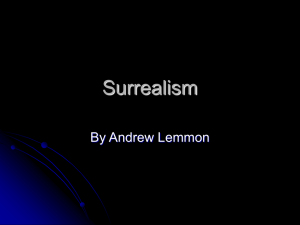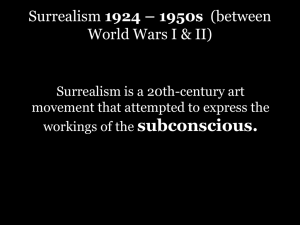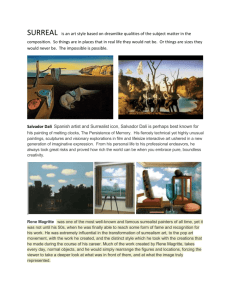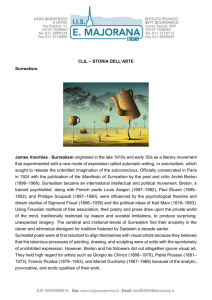Surrealism Exploring the Realm of Dreams and Reality
advertisement
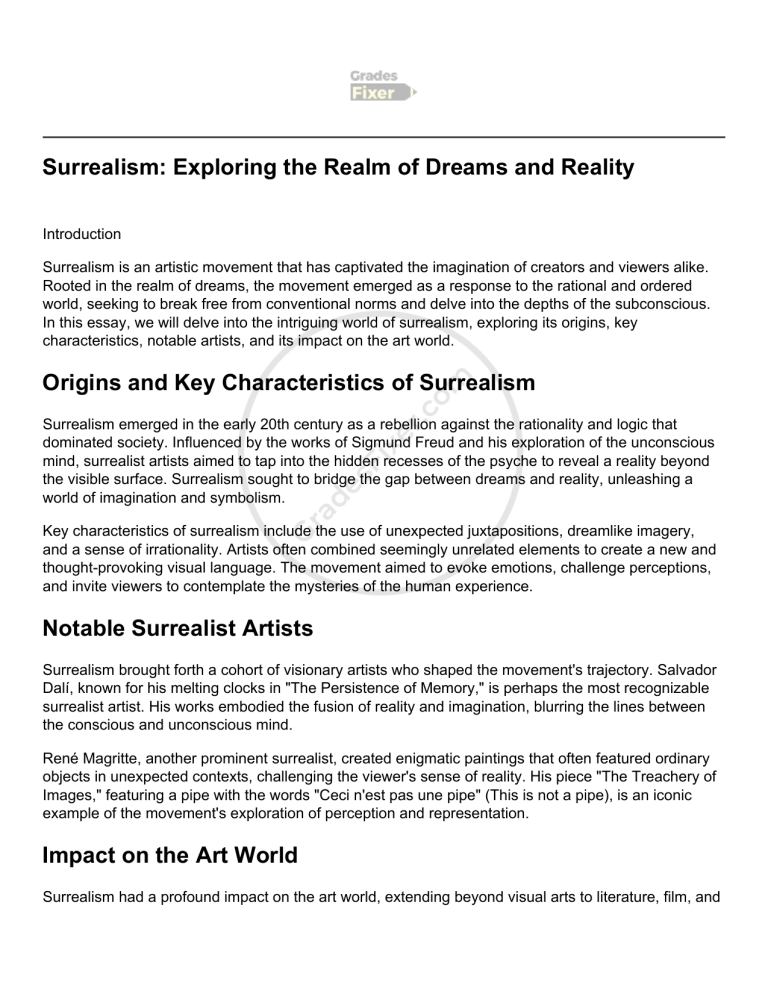
Surrealism: Exploring the Realm of Dreams and Reality Introduction Surrealism is an artistic movement that has captivated the imagination of creators and viewers alike. Rooted in the realm of dreams, the movement emerged as a response to the rational and ordered world, seeking to break free from conventional norms and delve into the depths of the subconscious. In this essay, we will delve into the intriguing world of surrealism, exploring its origins, key characteristics, notable artists, and its impact on the art world. Origins and Key Characteristics of Surrealism Surrealism emerged in the early 20th century as a rebellion against the rationality and logic that dominated society. Influenced by the works of Sigmund Freud and his exploration of the unconscious mind, surrealist artists aimed to tap into the hidden recesses of the psyche to reveal a reality beyond the visible surface. Surrealism sought to bridge the gap between dreams and reality, unleashing a world of imagination and symbolism. Key characteristics of surrealism include the use of unexpected juxtapositions, dreamlike imagery, and a sense of irrationality. Artists often combined seemingly unrelated elements to create a new and thought-provoking visual language. The movement aimed to evoke emotions, challenge perceptions, and invite viewers to contemplate the mysteries of the human experience. Notable Surrealist Artists Surrealism brought forth a cohort of visionary artists who shaped the movement's trajectory. Salvador Dalí, known for his melting clocks in "The Persistence of Memory," is perhaps the most recognizable surrealist artist. His works embodied the fusion of reality and imagination, blurring the lines between the conscious and unconscious mind. René Magritte, another prominent surrealist, created enigmatic paintings that often featured ordinary objects in unexpected contexts, challenging the viewer's sense of reality. His piece "The Treachery of Images," featuring a pipe with the words "Ceci n'est pas une pipe" (This is not a pipe), is an iconic example of the movement's exploration of perception and representation. Impact on the Art World Surrealism had a profound impact on the art world, extending beyond visual arts to literature, film, and even philosophy. The movement's emphasis on tapping into the subconscious and embracing the irrational influenced various fields, leading to new ways of approaching creativity and expression. Additionally, surrealism paved the way for a broader questioning of reality and human consciousness. It challenged the established notions of beauty, meaning, and order, encouraging artists to embrace their innermost thoughts and emotions. Surrealism's legacy continues to resonate in contemporary art, inspiring creators to explore the boundaries of imagination and reality. Conclusion In conclusion, surrealism stands as a captivating movement that bridged the gap between dreams and reality. Originating as a response to the rationality of the modern world, it opened the door to a realm of imagination, symbolism, and subconscious exploration. Notable artists like Salvador Dalí and René Magritte brought surrealism to life through their thought-provoking works, leaving an indelible mark on the art world. The movement's impact extends far beyond its inception, inspiring creators across disciplines to venture into the uncharted territories of the human psyche and the boundless realm of creativity. Need Help With The Assignment? Our professionals are ready to assist with any writing! GET HELP
